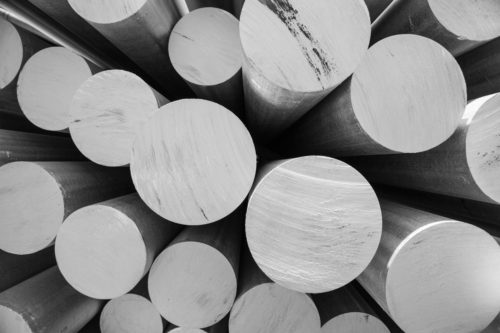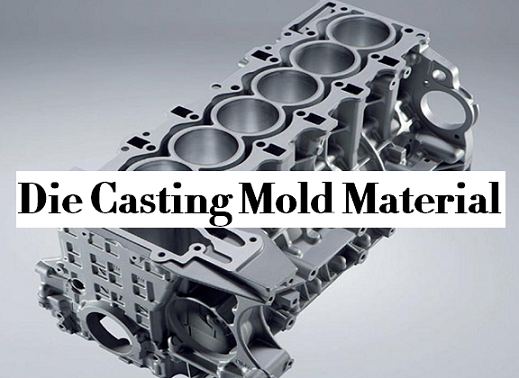The 6-Second Trick For Stahl Specialty Company
The 6-Second Trick For Stahl Specialty Company
Blog Article
Stahl Specialty Company Can Be Fun For Everyone
Table of ContentsExcitement About Stahl Specialty CompanyThe 25-Second Trick For Stahl Specialty CompanyThe Ultimate Guide To Stahl Specialty CompanySome Known Incorrect Statements About Stahl Specialty Company What Does Stahl Specialty Company Mean?Not known Details About Stahl Specialty Company

If you're designing a steel item, you've likely taken into consideration utilizing aluminum as the base product. It has a high strength-to-weight ratio, good deterioration resistance, great formability, and aesthetic appeal. These factors have actually led to its raised appeal over the last few years. Pure light weight aluminum has actually limited applications, so it is frequently combined with various other components, such as silicon, magnesium, and manganese to form alloys.
(AA), based in North America, has actually developed requirements that regulate light weight aluminum alloys' make-up, residential or commercial properties, and classification. There are 2 types of aluminum alloys wrought and cast.
Indicators on Stahl Specialty Company You Need To Know
Cast light weight aluminum alloys are made by thawing pure aluminum and integrating it with various other metals while in fluid type. The mix is poured right into a sand, die, or financial investment mold. After solidification, the metal is gotten rid of from its mold. At this phase, it is in either its final type or as a billet or ingot for further handling.

As an example, 160.0 represents a cast with a minimum of 99.60% light weight aluminum. The fourth number, which follows the decimal factor, specifies if the alloy is a casting (xxx. 0) or an ingot (xxx. 1). Wrought aluminum alloys additionally start by integrating liquified aluminum with other metals. Unlike cast alloys, nevertheless, they are formed into their last shape with processes such as extrusion, rolling, and bending after the metal has strengthened into billets or ingots.
There are several small distinctions in between functioned and cast light weight aluminum alloys, such as that actors alloys can consist of extra substantial quantities of various other steels than functioned alloys. The most remarkable distinction in between these alloys is the manufacture procedure with which they will certainly go to supply the final item. Apart from some surface area treatments, cast alloys will exit their mold in nearly the exact strong type preferred, whereas wrought alloys will certainly undertake a number of adjustments while in their solid state.
If you assume that a functioned alloy may be the most effective for your project, have a look at several of our write-ups that clarify even more concerning certain wrought alloys, such as Alloy 6061 and Alloy 6063. On the other hand, if you think an actors alloy would certainly be better for you, you can learn much more regarding some cast alloys in our Alloy 380 and Alloy 383 articles (coming soon).
The Buzz on Stahl Specialty Company
When picking a light weight aluminum foundry for your production demands, it's important to study numerous elements. Among one of the most crucial aspects to think about is the experience and competence of the factory. Foundry near me. Choosing a factory that has the right understanding of the light weight aluminum spreading process, and the portfolio to show for it, aids to have an effective outcome for your project
Having the experience and industry understanding to craft your spreadings for optimal production and high quality results will certainly simplify the project. Producing light weight aluminum spreading calls for a complex set of processes to accomplish the ideal outcomes. When choosing on a new light weight aluminum factory to companion with, guarantee they have comprehensive sector experience and are knowledgeable regarding all facets of the aluminum spreading procedure: design, production, material evaluation, and product testing.
The shop needs to additionally have a tested track record of delivering extraordinary products that fulfill or surpass customer expectations. Quality assurance should also go to the top of your listing when picking an aluminum foundry. By working with a certified shop that complies with the requirements for quality control, you can protect the integrity of your item and guarantee it fulfills your requirements.
By choosing a business who provides services that fulfill or surpass your product requirements, you can be sure that your project will be finished with miraculous accuracy and effectiveness. Specific aluminum foundries focus on certain kinds of manufacturing processes or casting techniques. Different components require various manufacturing techniques to cast light weight aluminum, such as sand casting or die spreading.
The Best Strategy To Use For Stahl Specialty Company
Die spreading is the name offered to the procedure of developing intricate steel parts with usage of mold and mildews of the element, likewise called dies. The procedure uses non-ferrous metals which do not contain iron, such as light weight aluminum, zinc and magnesium, due to the desirable buildings of the metals such as reduced weight, higher conductivity, non-magnetic conductivity and resistance to corrosion.
Die casting production is quick, making high manufacturing degrees of parts easy. It creates more elements than any kind of various other process, with a high degree of accuracy and repeatability. To get more information about die casting and die casting materials made use of at the same time, kept reading. There are 3 sub-processes that fall under the category of die spreading: gravity die spreading (or long-term mold and mildew casting), low-pressure die spreading and high-pressure die spreading.
Despite the sub-process, the die casting process can be broken down right into 6 actions. After the pureness of the alloy is tested, dies are produced. To prepare the needs casting, it is very important that the passes away are tidy, to ensure that no deposit from previous manufacturings remain. After cleaning, the ejection lubrication is related to the die to make sure a smooth launch.
Stahl Specialty Company for Beginners
The pure metal, additionally referred to as ingot, is contributed to the furnace and maintained at the molten temperature of the steel, which is after that transferred to the shot chamber and injected into the die. The stress is after that preserved as the steel strengthens. Once the useful reference metal strengthens, the cooling process starts.
(https://www.interweave.com/plus_old/members/stahlspecialc/profile/)
The thicker the wall surface of the part, the longer the cooling time as a result of the amount of interior metal that likewise requires to cool down. After the part is completely cooled down, the die halves open and an ejection system presses the part out. Following the ejection, the die is closed for the next injection cycle.
The flash is the extra material that is cast during the procedure. Deburring eliminates the smaller items, called burrs, after the cutting process.
Excitement About Stahl Specialty Company

Zinc is one of the most used alloys for die spreading due to its reduced expense of raw materials. Its corrosion resistance likewise allows the components to be long lasting, and it is one of the much more castable alloys due to its lower melting factor.
As mentioned, this alloy is among one of the most frequently utilized, yet produces will, at times, pick light weight aluminum over zinc as a result of light weight aluminum's manufacturing advantages. Light weight aluminum is extremely cost-effective and among the more flexible alloys. Aluminum is utilized for a variety of different items and industries anything from home window frames to aerospace products.
Report this page